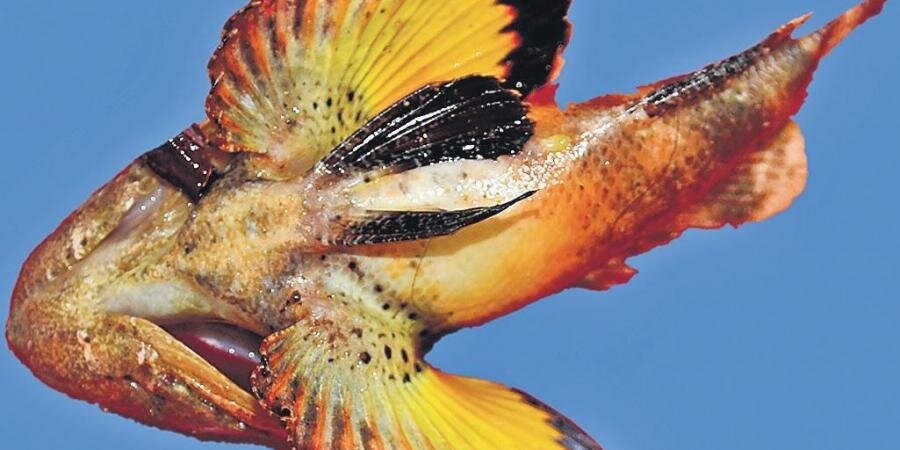Biodiversity & Environment
Scorpion Fish: Scorpaenopsis neglecta
- 01 Jun 2020
- 4 min read
Why in News
Recently, researchers at the Central Marine Fisheries Research Institute (CMFRI) have found a rare Scorpionfish (Scorpaenopsis neglecta) from Sethukarai coast in the Gulf of Mannar.
- This for the first time the particular species is discovered alive in Indian waters.
- It has been deposited in the National Marine Biodiversity Museum of the CMFRI.
Key Points
- Characteristics of Scorpaenopsis neglecta:
- Powerful sensory system:
- Unlike other fish, this band-tail Scorpion fish uses its lateral sensory system instead of eyes to hunt its prey.
- Lateral sensory system is a system of sense organs found in fishes which is used to detect movement, vibration, and pressure gradients in the surrounding water.
- Colour changing:
- The fish has the ability to change colour and camouflage to escape from predators and while catching a prey.
- Camouflage: It is a defense or tactic that organisms use to disguise their appearance, usually to blend in with their surrounding environment.This allows prey to avoid predators, and for predators to sneak up on prey.
- Neurotoxic:
- The fish is called ‘scorpionfish’ because its spines contain neurotoxin.
- Neurotoxins are chemical substances that are poisonous to the nervous system.
- Neurotoxins work by disrupting chemical signals sent between neurons and paralysing the whole system.
- Generally snakes i.e. King Cobra and marine snakes have these types of venom
- When the spines pierce an individual, the venom gets injected immediately.
- Eating the fish would also lead to death.
- The fish is called ‘scorpionfish’ because its spines contain neurotoxin.
- Powerful sensory system:
- About the Scorpionfish:
- Scorpionfish belong to the family Scorpaenidae which are mostly marine fish that includes many of the world's most venomous species.
- It is commonly found in the Indo-West Pacific region of the world.
- It is a biogeographic region of Earth's seas, comprising the tropical waters of the Indian Ocean, the western and central Pacific Ocean, and the seas connecting the two in the general area of Indonesia.
- It is a nocturnal feeder and lays motionless in the sea bottom and waits for the prey to come close to it.
- Nocturnal species are those which prefer to be active at night and sleep during the day. E.g. Bats.
The Central Marine Fisheries Research Institute
- It was established by the Government of India in 1947 under the Ministry of Agriculture and Farmers Welfare and later it joined the Indian Council of Agricultural Research (ICAR) family in 1967 .
- It is a leading tropical marine fisheries research institute in the world, headquartered in Kochi, Kerala.
- Objectives:
- Marine Fishery Resource Assessment.
- Productivity and Production Enhancement through Mariculture.
- Conservation of Marine Biodiversity.
- Transfer of Technology, Training and Consultancy.




